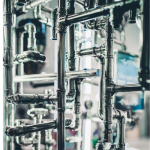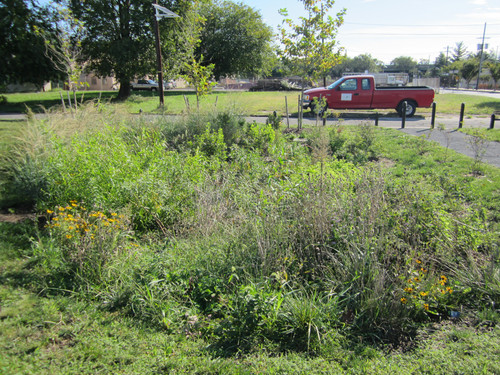New Jersey Future Blog
On Earth Day, Taking Stock of New Jersey’s Environmental Record
April 20th, 2009 by Jay Corbalis
- The use of public transportation in New Jersey has increased steadily since 1990, with the percentage of commuters using mass transit rising from 9 percent in 1990 to an estimated 10.7 percent in 2007.
- Over the same period, however, the percentage of commuters driving alone to work also increased, from 73.2 percent in 1990 to 74.4 percent in 2007. The rate of walking to work fell from 4.2 percent to 3.4 percent in 2007. The number of people biking to work is minuscule, accounting for only 0.3 percent of all commuters.
- Between 1986 and 1995, the annual rate of farmland lost to development in New Jersey was about 6,100 acres. Between 1995 and 2002, the number dropped to 5,150 acres per year.
- Between 1986 and 2002, a total of 281 acres of coastal wetlands were lost to development, according to researchers at Rutgers and Rowan universities. Prior to passage of the Wetlands Act of 1970, more than 10,000 acres of coastal marshes were lost in Barneget Bay alone.
Progress on Some Fronts, Challenges on All
On the eve of another Earth Day in New Jersey, it is clear that there is still much work to be done to achieve a more environmentally friendly, sustainable state. On the transportation front, the steady increase in transit use by commuters is an encouraging sign, but walking and biking still represent only a tiny fraction of total trips.
And per-capita vehicle miles traveled (VMT) continues to creep upward, from 20.8 miles per person per day in 1990 to 24.1 miles in 2007. There is much variability within the state, however; per-capita daily VMT is less than 20 miles in Hudson, Passaic and Essex counties, while it exceeds 30 miles in Hunterdon, Warren, Salem, Cape May and Morris counties. Per-capita VMT is four times higher in Hunterdon (42.1 miles) than in Hudson (10.7).
Similarly, analysis of land use/land cover data produces mixed results. The trend toward a reduction in the loss of farmland and coastal wetlands is encouraging. But researchers at Rutgers and Rowan report that the conversion of upland forest (i.e., non-wetland forested lands) to urban uses has been accelerating — from an annual rate of about 7,500 acres between 1986 and 1995 to 8,350 acres per year between 1995 and 2002.
Often, New Jersey Future cites statistics such as these to focus attention on statewide economic, transportation and environmental policies that help shape the state of our state. Earth Day offers an appropriate occasion to personalize that focus, to recognize that real change often happens at the individual level, decision by decision.
Here is a sample of what each of us can do to make New Jersey a cleaner, greener state:
Walk or ride a bike for local trips. Transportation represents the largest, and fastest-growing, share of New Jersey’s carbon footprint. The vast majority of transportation emissions are created by trips in single occupancy vehicles. Yet according to the National Complete Streets Coalition, if each resident of an American community of 100,000 replaced one car trip with one bike trip just once a month, it would cut carbon dioxide emissions by 3,764 tons per year in the community.
Support local farming. There are more than 10,000 farms in the Garden State, representing 730,000 acres. According to the New Jersey Council of Farmers and Communities, there were more than 80 farmers’ markets in the state in 2007. In addition, farmers provide their crops directly to customers at an estimated two dozen Community Supported Agriculture (CSA) farms across the state. To find “Jersey Fresh” produce in your area, visit http://www.jerseyfresh.nj.gov/ , and for organic produce outlets, see www.nofanj.org.
Reduce, Reuse, Recycle. The average New Jersey resident produces 5.4 pounds of trash each day. In 2007, the average recycling rate in the state was 55 percent, though that number varied widely by county, from a high of 64.5 percent in Middlesex to a low of 35.3 percent in Hunterdon. Recycling cans and bottles and using reusable shopping bags can help cut down on the more than 20 million tons of waste produced in the state each year.
Live where you work. In 2007, New Jersey had the second-longest commute times in the nation among those who drive alone to work. While it is certainly not a short-term decision, living closer to one’s job can help reduce congestion and lower one’s personal carbon footprint. The state Housing and Mortgage Finance Agency has a Live Where You Work program to assist eligible home buyers with down payment and closing costs in participating New Jersey cities.
If you have any questions about this issue of Future Facts, please contact Policy Analyst (jcorbalis njfuture
njfuture org) Jay Corbalis.
org) Jay Corbalis.
















